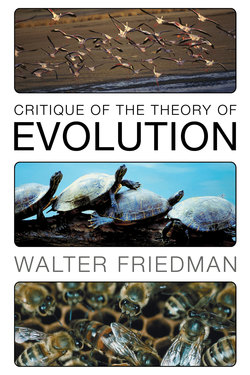Читать книгу Critique of the Theory of Evolution - Walter Friedman - Страница 10
На сайте Литреса книга снята с продажи.
5 : Too Many Obstacles
Оглавление“Cradle of Life”
According to the evolutionists, the ocean is the cradle of life because it is the place where the original cell came to be. Creatures big and small inhabited the ocean, then some of them moved ashore in search of a better life. But the shore was empty and there was no vegetation around. Unless we assume that vegetation moved out of the sea and onto land first, we come to the conclusion that the creatures must have returned to the sea with its abundance of food.
It is not hard to imagine how seaweed found itself on a shore as the result of a powerful storm. But seaweed does not have the luxury of moving in and out of the sea; once it is on the soil it has to adapt to new conditions fast, otherwise it withers away. It takes several generations for seaweed, or any other type of vegetation, to adapt to new conditions. If the evolutionary theory is correctly applied, it leads to the erroneous conclusion that the flora and fauna were never able to leave their original sea habitat.
Two Sexes
Another obstacle that the evolutionary theory faces is the existence of two sexes.
The evolutionary theory stumbles and falls when its proponents fail to explain the fact that there are two sexes in the animal world. All evolutionists agree that the original cell was asexual—it didn’t have reproductive organs. As the evolutionists contend, the reproductive organs appeared later when the organisms became more complex.
There are three possible ways that this could have happened: 1) Some organisms could have developed the penis first, then, say, one million years later the vagina evolved. But the penis alone is a useless characteristic and, if the evolutionary theory is correctly interpreted, its uselessness should have made it disappear quite soon. 2) The vagina could have appeared first. (The same logic as in the previous case applies.) 3) The vagina and penis could have appeared simultaneously. How great is the chance of that? Besides, since they evolved separately, there is no reason why they should be compatible. For example, it could have been a huge penis and a miniature vagina. More importantly, there is no reason why they should be genetically compatible (genetic compatibility is required to produce offspring).
An asexual organism does not need a partner to reproduce itself; it can branch itself into similar organisms at any time. When two sexes are involved, not everyone gets a shot at it. Some members of a species have to wait until the next mating season. This means that asexual species have a better chance of reproduction and subsequent survival of the species, so asexuality is not a characteristic to be lost. Once again, the evolutionary theory leads to a wrong conclusion.
Not Knowing How Evolution Occurred
The evolutionists say, “we do not know exactly how evolution occurred, but we know that it occurred because it makes sense to us; otherwise it is impossible to explain similarities between certain types of animals.”
Let’s see what happens if this line of reasoning is used in the other branches of natural science. According to Einstein’s theory of relativity, the mass of a moving object increases along with the increase in its speed and becomes infinite when the object reaches the speed of light. All experimental data shows that this is, indeed, the case. Now, imagine Einstein saying, “the objects become lighter as their speed increases. I do not know why this happens and, frankly, I do not care why, but this makes sense to me!” Needless to say, this “Einstein” would never become a household name.
But this is exactly what the evolutionists do—while there is no experimental data to support their claim, they simply state that the evolution hypothesis makes sense to them. Very scientific, isn’t it?
The Platypus Logic
The evolutionists are experiencing great joy—an overly enthusiastic evolutionist discovered the missing link between the sea creatures and the earth creatures. This specimen is called the “missing link” because he has characteristics of both ocean inhabitants and earth inhabitants.
Here is the question—does the fact that a specimen has characteristics of both species A and species B imply that a transition from A to B, or from B to A, took place? According to the evolutionists, this, indeed, is the case; otherwise, they wouldn’t be looking for the “missing links.”
What about the platypus, then? It has characteristics of both the bird and the mammal—it lays eggs and at the same time produces milk. However, the evolutionists insist that birds and mammals constitute two distinct branches that did not evolve from each other; they just have a common ancestor, whoever that creature may be.
What else is new? Like all idiots, evolutionists make contradictory statements.
What about the mule? It has characteristics of both the horse and the donkey. However, the mule is not a missing link between the horse and the donkey; if anything is missing here it’s the evolutionist’s brain.
Now, imagine an earth creature taking a bath in shallow waters and in the process getting impregnated by a sea creature. This is how the missing link the evolutionists are so proud of was conceived! The evolutionists will, certainly, say that this is an impossible scenario. Yes, it is; but the “missing link” is an equally improbable scenario.
